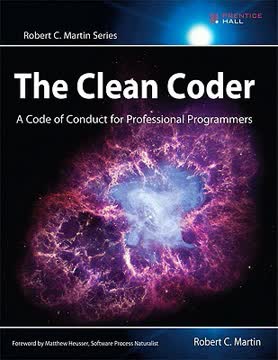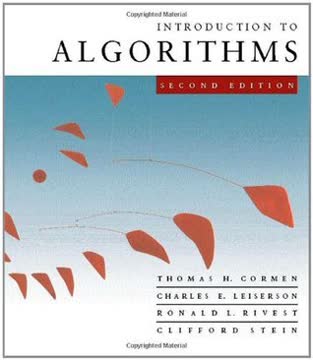Key Takeaways
1. Search engines use indexing and ranking algorithms to find relevant information
PageRank is indeed an algorithmic gem that allows a needle to rise effortlessly to the top of its haystack.
Indexing for efficient search. Search engines create an index of web pages, similar to a book index, allowing rapid lookup of pages containing query terms. They use tricks like storing word locations within pages to enable phrase searches. This indexing allows search engines to quickly find matching pages among billions of documents.
Ranking for relevance. Simply finding matching pages is not enough - search engines must determine which results are most relevant. Google's PageRank algorithm revolutionized search by ranking pages based on how many other important pages link to them. This allows the most authoritative and relevant results to rise to the top.
- Key search engine components:
- Web crawler to index pages
- Inverted index for fast lookup
- Ranking algorithm like PageRank
- Query processing to return results
2. Public key cryptography enables secure communication over insecure channels
You can expect to look through all of the training samples many times, you will see that everything is perfectly consistent, so you might be tempted to conclude that "yes" is the right answer.
Encryption with public and private keys. Public key cryptography uses mathematically linked public and private keys. The public key can be freely shared to encrypt messages, while only the private key can decrypt them. This allows secure communication without having to exchange secret keys in advance.
Key exchange over insecure channels. The Diffie-Hellman key exchange protocol enables two parties to establish a shared secret key over an insecure channel. This is done through clever use of modular arithmetic operations that are easy to compute in one direction but extremely difficult to reverse.
- Applications of public key cryptography:
- Secure web browsing (HTTPS)
- Encrypted email
- Digital signatures
- Secure messaging apps
3. Error-correcting codes ensure reliable data transmission and storage
Without these codes, our computers and communication systems would be drastically slower, less powerful, and less reliable than they are today.
Detecting and correcting errors. Error-correcting codes add redundant information to data, allowing detection and correction of errors that occur during transmission or storage. This ensures data integrity even when using unreliable communication channels or storage media.
Widespread use in digital systems. Error-correcting codes are ubiquitous in modern digital systems. They are used in computer memory, hard drives, CDs/DVDs, satellite communications, and mobile networks. These codes enable reliable operation despite the presence of noise and physical defects.
- Common error-correcting codes:
- Hamming codes
- Reed-Solomon codes
- Low-density parity-check codes
- Turbo codes
4. Pattern recognition allows computers to learn from data and make predictions
The beauty of using keys like this is that databases can look up keys with superb efficiency.
Learning from examples. Pattern recognition algorithms learn to classify or predict outcomes by analyzing labeled training data. This allows computers to make intelligent decisions on new, unseen data based on patterns observed in the training set.
Diverse applications. Pattern recognition enables a wide range of applications including image classification, speech recognition, handwriting recognition, and medical diagnosis. It forms the foundation for many artificial intelligence and machine learning systems.
- Key pattern recognition techniques:
- Nearest neighbor classifiers
- Decision trees
- Neural networks
- Support vector machines
5. Data compression reduces file sizes without losing essential information
Lossless compression is the ultimate free lunch that really does give you something for nothing.
Lossless vs. lossy compression. Lossless compression allows perfect reconstruction of the original data, while lossy compression achieves higher compression ratios by discarding some information. Lossless compression is used for text and programs, while lossy compression is common for images, audio, and video.
Compression algorithms. Common lossless compression techniques include run-length encoding, dictionary-based methods like LZ77, and statistical methods like Huffman coding. Lossy compression often exploits limitations of human perception, discarding information that is not easily noticed.
- Applications of data compression:
- Reducing file sizes for storage/transmission
- Enabling efficient streaming of media
- Improving performance of databases and file systems
- Reducing bandwidth requirements for networks
6. Database systems maintain consistency and reliability for large-scale data storage
Databases address two major issues in transaction processing: efficiency and reliability.
ACID properties. Database systems ensure Atomicity, Consistency, Isolation, and Durability (ACID) for transactions. This guarantees that database operations are reliable and maintain data integrity even in the presence of concurrent access and system failures.
Relational model and SQL. Most modern databases use the relational model, organizing data into tables with relationships between them. SQL (Structured Query Language) provides a standardized way to interact with relational databases, allowing complex queries and data manipulations.
- Key database concepts:
- Transactions and locking
- Indexing for fast retrieval
- Query optimization
- Replication and disaster recovery
7. Digital signatures provide authentication and integrity for electronic documents
Digital signatures are not just ingenious ideas. They have evolved into commercial technologies and internet standards with great importance for businesses and individuals alike.
Asymmetric cryptography for signatures. Digital signatures use public key cryptography to create unforgeable electronic signatures. The signer uses their private key to create the signature, which can be verified by anyone using the signer's public key.
Applications and legal status. Digital signatures are widely used to sign software, secure email, and authenticate documents. In many countries, they have the same legal status as handwritten signatures, enabling secure electronic transactions and contracts.
- Properties of digital signatures:
- Authentication of signer's identity
- Non-repudiation (signer cannot deny signing)
- Integrity (detects any changes to signed document)
- Timestamping (can prove when document was signed)
8. Some computational problems are provably unsolvable by any algorithm
There are problems that can never be solved by computers. This profound fact—that some things are "computable" and others are not—provides an interesting counterpoint to the many algorithmic triumphs we've seen in the preceding chapters.
Halting problem and undecidability. Alan Turing proved that the halting problem - determining whether an arbitrary program will terminate or run forever - is undecidable. This means no algorithm can solve it for all possible inputs.
Implications for software verification. The undecidability of the halting problem implies fundamental limitations on automated software verification. It is impossible to create a general-purpose program that can detect all possible bugs or prove correctness for arbitrary programs.
- Other undecidable problems:
- Determining if two programs compute the same function
- Solving Diophantine equations (Hilbert's 10th problem)
- The Post correspondence problem
- Determining if a context-free grammar is ambiguous
Last updated:
FAQ
What's Nine Algorithms That Changed the Future about?
- Exploration of Algorithms: The book delves into nine significant algorithms that have shaped modern computing, explaining their principles and applications.
- Accessible to All: John MacCormick presents complex concepts in a way that is understandable to readers without a technical background.
- Real-World Applications: It connects theoretical algorithms to practical uses, such as data compression, search engines, and cryptography, enhancing the reader's understanding of their impact.
Why should I read Nine Algorithms That Changed the Future?
- Understanding Technology: The book equips you with knowledge about the algorithms that power the technology you use daily, demystifying their workings and significance.
- Inspiration for Innovation: It showcases the creativity involved in algorithm design, potentially inspiring readers to think innovatively in their own fields.
- Engaging Narrative: John MacCormick presents the material in an engaging manner, making it enjoyable to learn about complex topics.
What are the key takeaways of Nine Algorithms That Changed the Future?
- Algorithmic Foundations: The book emphasizes the foundational role of algorithms in computer science and technology.
- Diversity of Applications: Each algorithm discussed has diverse applications, illustrating their versatility in solving real-world problems.
- Historical Context: The author provides historical context for each algorithm, enriching the reader's appreciation of their significance.
What are the best quotes from Nine Algorithms That Changed the Future and what do they mean?
- “The world has arrived at an age of cheap complex devices of great reliability; and something is bound to come of it.”: Highlights the transformative power of technology and potential for innovation.
- “Computing is transforming our society in ways that are as profound as the changes wrought by physics and chemistry in the previous two centuries.”: Underscores the profound impact of computing on society.
- "We can only see a short distance ahead, but we can see plenty there that needs to be done.": Reflects ongoing challenges in computer science and potential for future innovations.
What is the PageRank algorithm discussed in Nine Algorithms That Changed the Future?
- Ranking Web Pages: PageRank ranks web pages based on their importance, determined by the number and quality of links to them.
- Hyperlink Structure: It uses the structure of hyperlinks on the web to assess the authority of pages, treating links as votes of confidence.
- Impact on Search Engines: PageRank was pivotal in establishing Google as a dominant search engine, significantly improving search result relevance.
How does public key cryptography work in Nine Algorithms That Changed the Future?
- Secure Communication: Public key cryptography allows secure communication over an insecure channel using a pair of keys: a public key for encryption and a private key for decryption.
- Key Exchange: The book explains the Diffie-Hellman key exchange method, enabling two parties to establish a shared secret without prior communication.
- Real-World Applications: This method is crucial for secure online transactions, ensuring sensitive information can be transmitted safely.
What are error-correcting codes as described in Nine Algorithms That Changed the Future?
- Detecting and Correcting Errors: Error-correcting codes enable computers to detect and correct errors in data transmission or storage, ensuring data integrity.
- Hamming Codes: Richard Hamming's invention allows computers to identify and fix errors without needing to resend the entire data set.
- Importance in Computing: These codes are essential for reliable communication in various technologies, including hard drives and network transmissions.
What is the nearest-neighbor classifier mentioned in Nine Algorithms That Changed the Future?
- Classification Method: The nearest-neighbor classifier classifies data points based on the closest training examples in the feature space.
- K-Nearest Neighbors: This method can be extended to consider the K nearest neighbors, allowing for more robust classification by majority voting.
- Applications: It is widely used in pattern recognition tasks, such as handwriting recognition and image classification.
What is the "Same-as-Earlier Trick" in Nine Algorithms That Changed the Future?
- Definition: The "Same-as-Earlier Trick" is a method used in data compression, specifically in the context of the LZ77 algorithm.
- Practical Example: It allows a program to reference previously seen data instead of repeating it, thus saving space.
- Importance in ZIP Files: Understanding this trick is essential for grasping how ZIP files compress data.
How does Nine Algorithms That Changed the Future explain the concept of "Digital Signatures"?
- Definition of Digital Signatures: Digital signatures are cryptographic tools that verify the authenticity of digital messages or documents.
- Practical Applications: They are used in software distribution, secure communications, and online transactions.
- Mechanism of Action: The author explains the underlying mathematics, including public key cryptography, to help readers understand their security.
What is the "Halting Problem" mentioned in Nine Algorithms That Changed the Future?
- Definition: The Halting Problem addresses whether a given program will finish running or continue indefinitely and is proven to be undecidable.
- Significance: It illustrates the inherent boundaries to what can be computed, regardless of technological advancements.
- Connection to Other Concepts: Related to the Crashing Problem, it highlights the challenges of predicting program behavior.
How does Nine Algorithms That Changed the Future address the concept of "Compression"?
- Types of Compression: The book distinguishes between lossless and lossy compression techniques.
- Importance of Compression: Compression algorithms are vital for efficient data storage and transmission, especially in an era of big data.
- Real-World Examples: Examples include file storage and streaming media, emphasizing the practical impact of understanding compression techniques.
Review Summary
Nine Algorithms That Changed the Future is a well-received book that explains complex computer algorithms in an accessible manner. Readers appreciate MacCormick's clear writing and use of analogies to simplify technical concepts. The book is praised for its ability to demystify important computing ideas for non-experts. While some find it overly simplified, most agree it's an excellent introduction to computer science fundamentals. Positive reviews highlight the book's engaging content and its success in making algorithms understandable to a general audience. Some readers wished for more depth, but overall, the book is recommended for those curious about the inner workings of modern technology.
Similar Books










Download PDF
Download EPUB
.epub digital book format is ideal for reading ebooks on phones, tablets, and e-readers.




